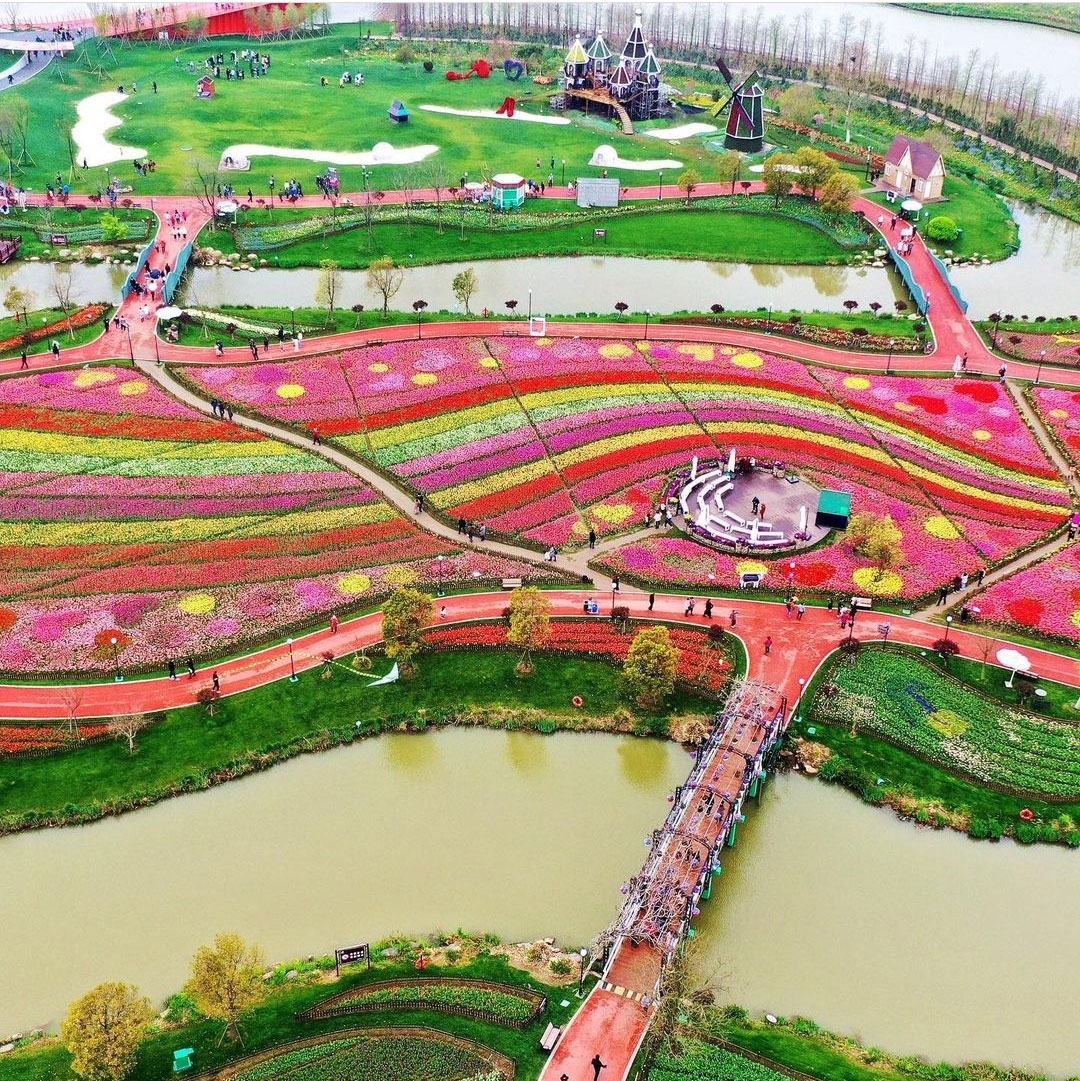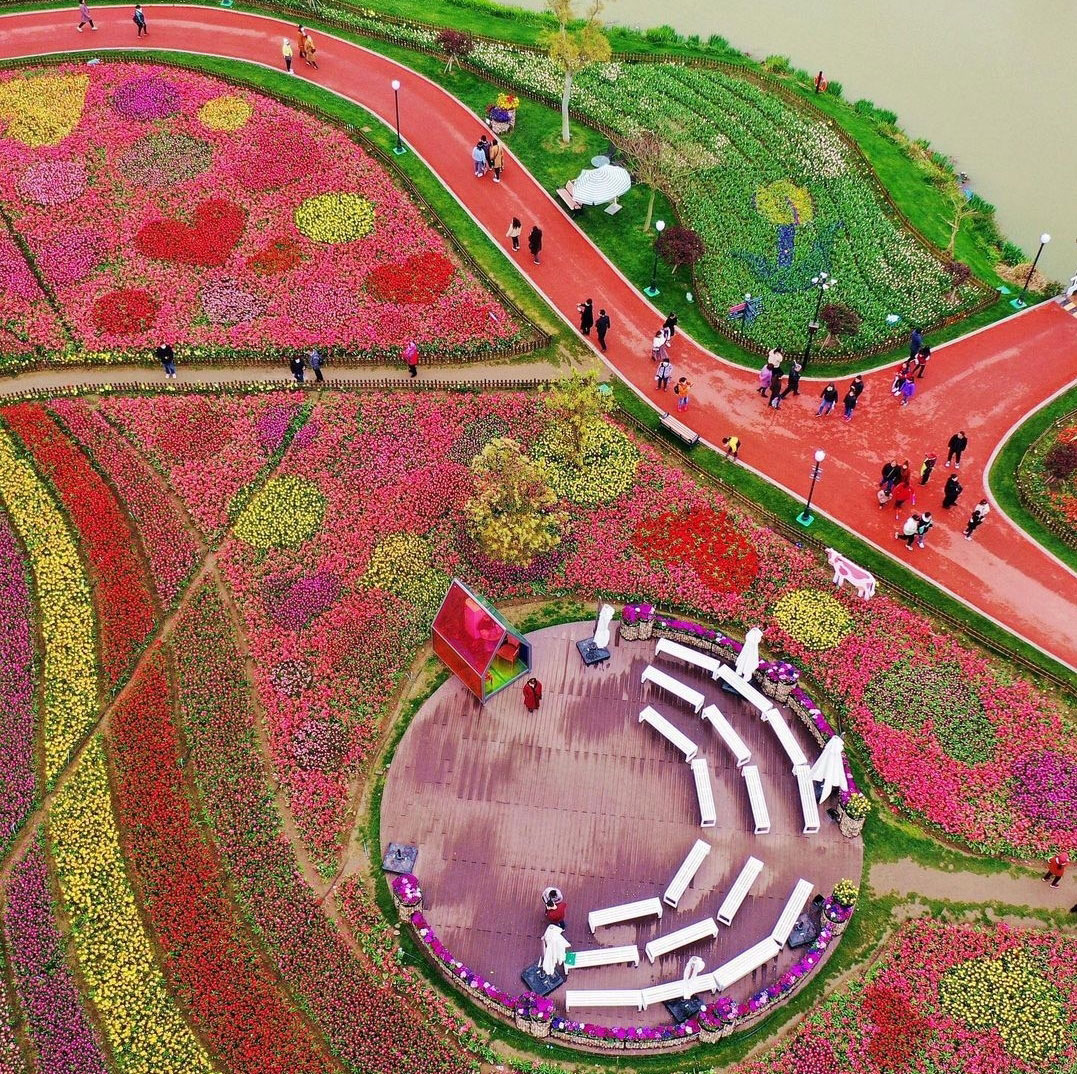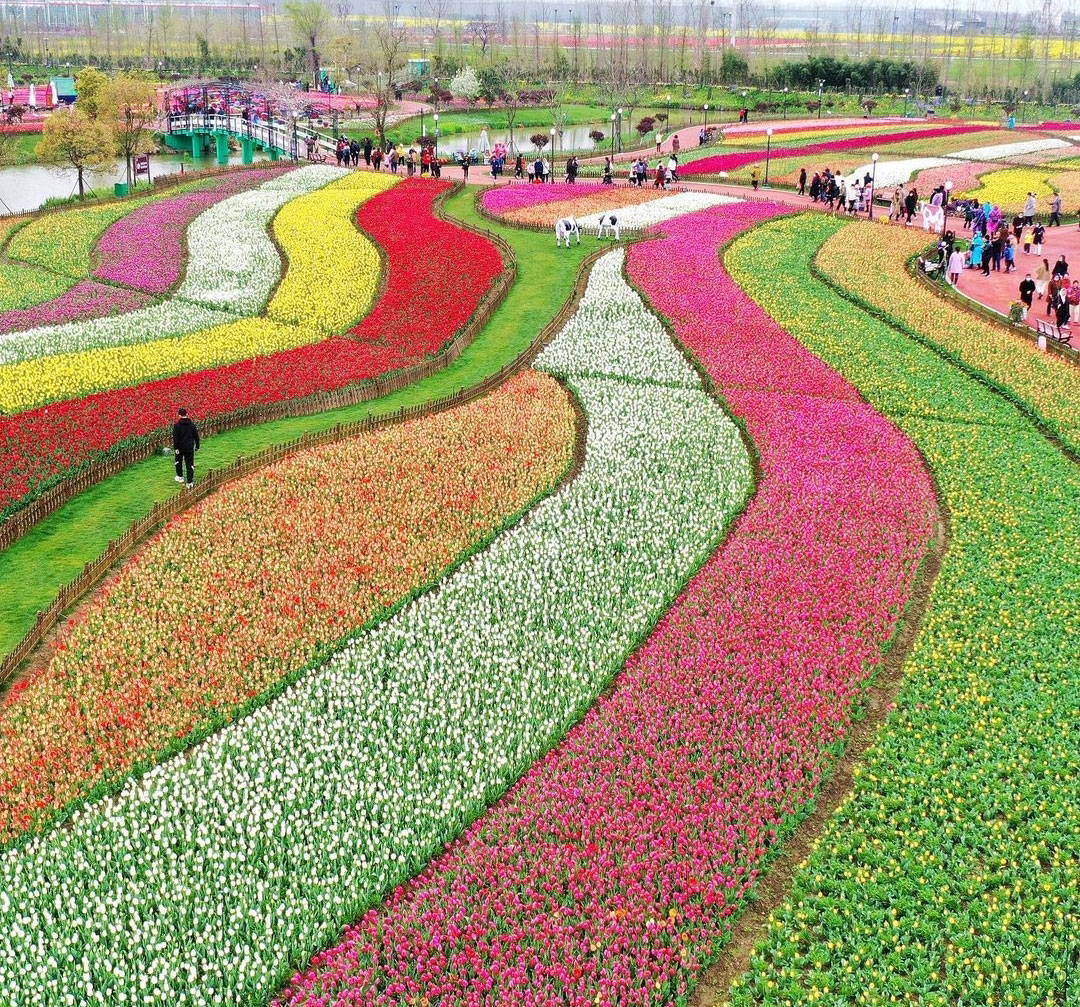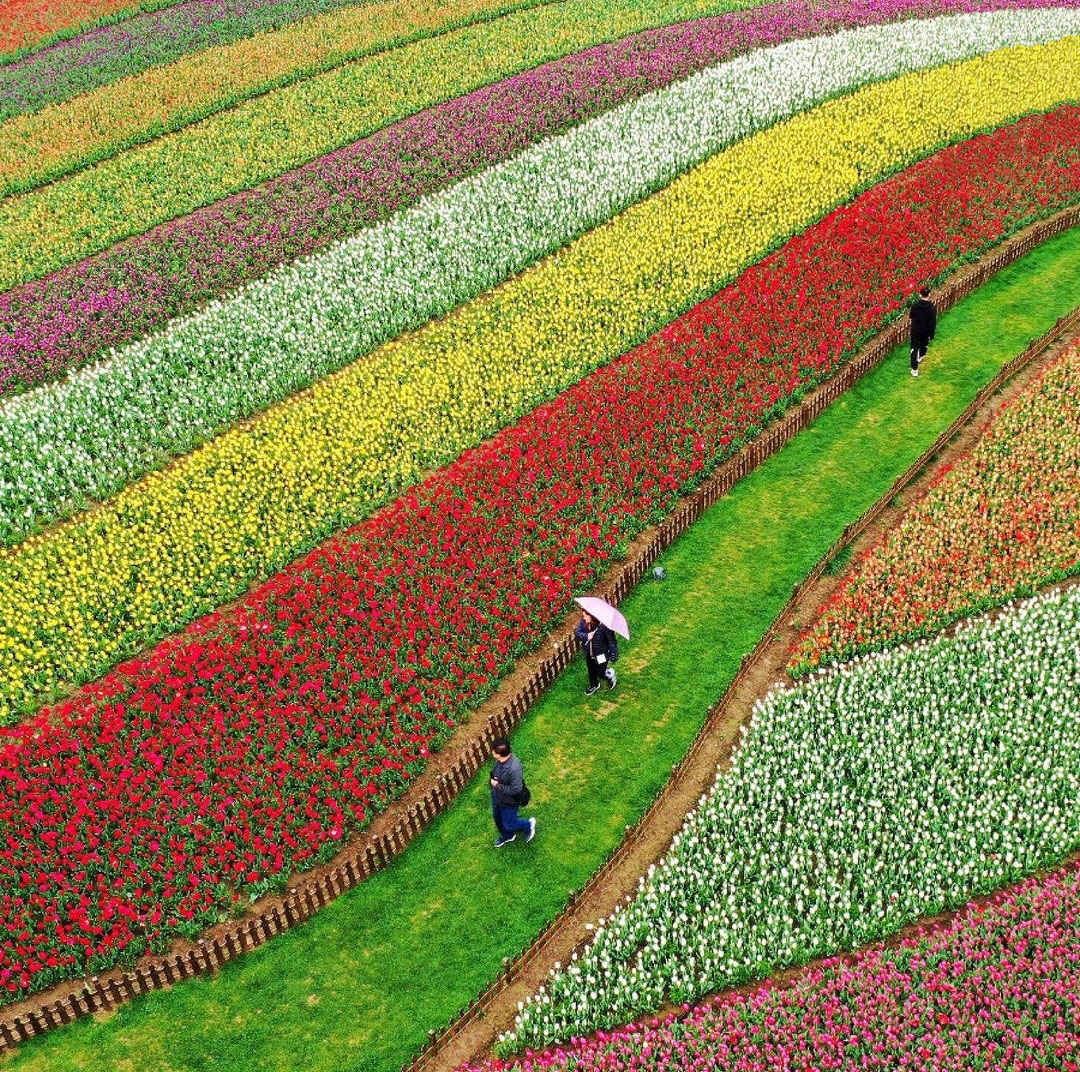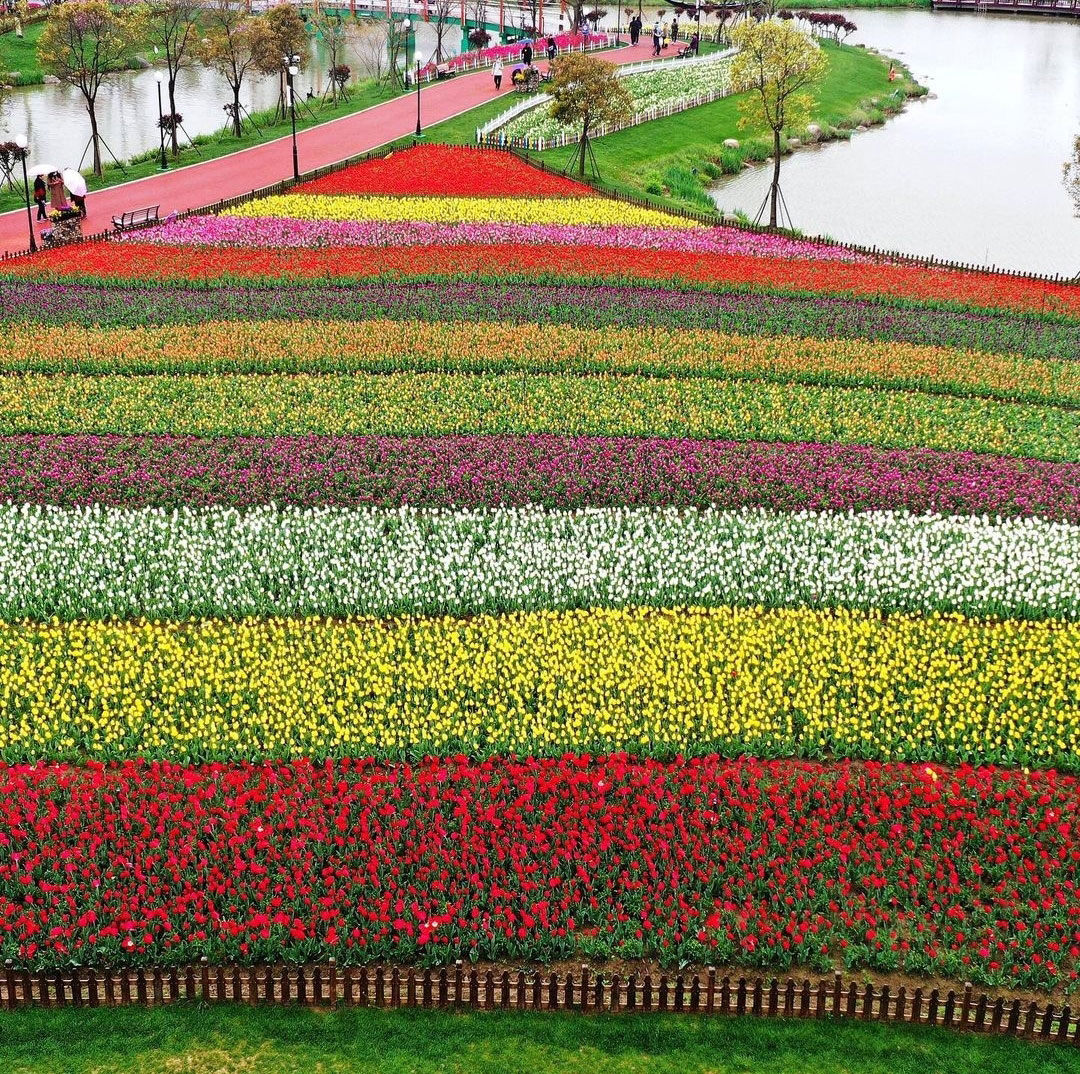NATURA IN TRASFERTA
LANDSCAPE | HOLLAND TULIPS
Non vi è entità più artificiale della materia botanica, come il giardino barocco ci racconta da secoli. Con la postmodernità, il mondo vegetale trova interessanti interpretazioni non solo nel disegno del paesaggio, ma anche dell’architettura e del design a tutte le scale.
Che si tratti di coltivazioni o di soluzioni ornamentali, le piante plasmano il territorio. In Olanda, attraverso la coltivazione dei tulipani, si creano strabilianti giga-pattern in cui geoetria e colore si fondono indissolubilmente.
Quest’ultima tradiozione viene anche esportata. Ne è un esempio l’Holland Flower Park di Yancheng, in Cina, parco tematico in stile olandese con tappeti multicolore di tulipani in fiore e anche qualche mulino a vento, per un tocco filologico.
Questa grande area, contrassegnata circondata da fiumi e canali – proprio come nei Paesi Bassi – ospita il Qingming Festival, i tre giorni di festa dopo l’equinozio di primavera tradizionalmente dedicati alla commemorazione degli avi.
Nature on the move – There is no more artificial entity than botanical matter, as the Baroque garden has told us for centuries. With postmodernity, the plant world finds interesting interpretations not only in landscape design, but also in architecture and design at all scales.
Whether it is crops or ornamental solutions, plants shape the territory. In Holland, through the cultivation of tulips, amazing giga-patterns are created in which geoetry and color blend indissolubly.
The latter tradition is also exported. An example is the Holland Flower Park in Yancheng, China, a Dutch-style theme park with multicolored carpets of blooming tulips and even some windmills, for a philological touch.
This large area, marked surrounded by rivers and canals – just like in the Netherlands – hosts the Qingming Festival, the three days of celebration after the vernal equinox traditionally dedicated to the commemoration of ancestors.


